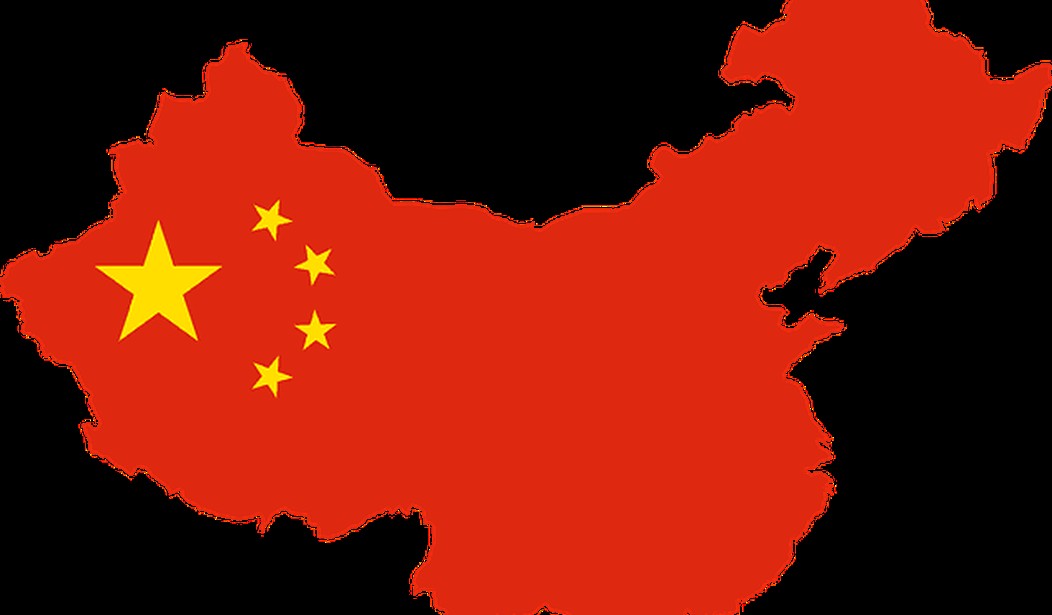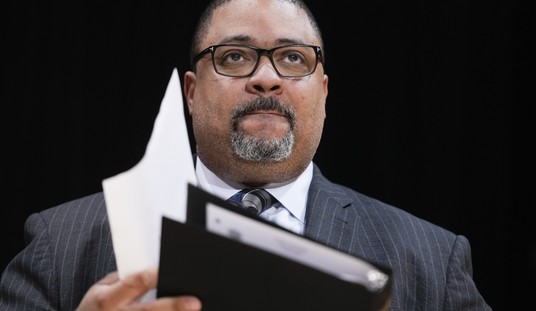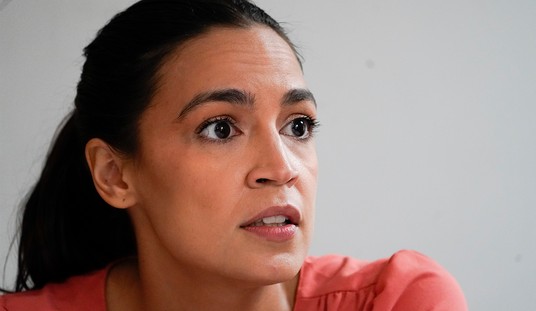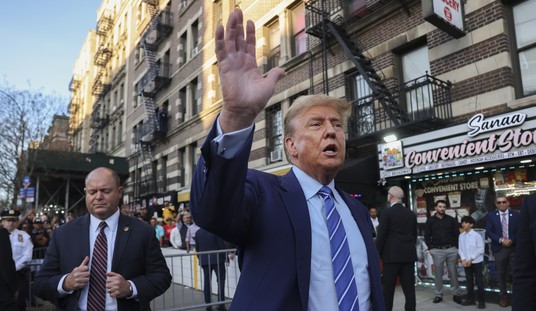The impeachment farce, the chaos in the Democrat primaries, and the spread of the coronavirus have taken our eyes off the ball of the real long-term threat to the US posed by The People’s Republic of China. Although the ChiComs are sustaining body blows to their economy thanks to their mismanagement of the coronavirus, they still invest heavily in military modernization and overseas. China represents an existential threat to the national security of the US in terms of growth of military capabilities but more importantly in the economic realm as they pursue their “Made in China 2025” and Belt-Road initiatives at home and abroad.
The purpose of this series is to present the contents of one of those reports in “bite-sized chunks” that are more easily digestible in order to convey a better understanding of the Chinese economy and its long-term challenges to the US and the world. Part I introduced and summarized the Congressional Research Service report, “China’s Economic Rise: History, Trends, Challenges, and Implications for the United States,” which forms the basis for this series. So far, we have covered the report’s summary, a history of China’s economic development since 1979, the two main factors contributing to their development over the years, measuring the size of China’s economy, China’s role as the world’s largest manufacturer, changes in China’s wage and labor cost advantages, foreign direct investment in China and the factors driving the outflow of foreign direct investment from China, and China’s merchandise trade patterns, including major trading partners and major Chinese trading commodities, and then the two parts that covered the major long-term challenges facing the Chinese economy. Parts I, II, III, IV, V, VI, VII, and VIII can be found here, here, here, here, here, here, here, and here.
This part wraps up the series by addressing the economic goals of the 19th Congress of the Chinese Communist Party, the Belt-Road Initiative, Made in China 2025, and the challenges to US policy of China’s economic rise.
Economic Goals of the 19th Party Congress of the Communist Party
President Xi’s report to the 19th Party Congress in November 2017 stated that socialism with Chinese characteristics had entered a new era. He stated that China would work to become a “moderately prosperous society in all respects” by 2050. Major goals include boosting living standards for poor and rural people, addressing income disparities (e.g., rich-poor and urban rural), making private consumption the driver of the economy, boosting services, reducing pollution, promoting innovation and economic modernization, and improving overall living standards. For example, the report states the following:
We will work faster to build China into a manufacturer of quality and develop advanced manufacturing, promote further integration of the internet, big data, and artificial intelligence with the real economy, and foster new growth areas and drivers of growth in medium-high end consumption, innovation-driven development, the green and low-carbon economy, the sharing economy, modern supply chains, and human capital services. We will support traditional industries in upgrading themselves and accelerate development of modern service industries to elevate them to international standards. We will move Chinese industries up to the medium-high end of the global value chain, and foster a number of world-class advanced manufacturing clusters.
The report indicated that China would continue to pursue trade and investment reforms, noting the following:
We will adopt policies to promote high-standard liberalization and facilitation of trade and investment; we will implement the system of pre-establishment national treatment plus a negative list across the board, significantly ease market access, further open the service sector, and protect the legitimate rights and interests of foreign investors. All businesses registered in China will be treated equally.
However, the report emphasized the continued importance of the state sector and the government’s continued role in various economic sectors:
We will improve the systems for managing different types of state assets, and reform the system of authorized operation of state capital. In the state-owned sector, we will step up improved distribution, structural adjustment, and strategic reorganization. We will work to see that state assets maintain and increase their value; we will support state capital in becoming stronger, doing better, and growing bigger, and take effective measures to prevent the loss of state assets. We will further reform of state-owned enterprises, develop mixed-ownership economic entities, and turn Chinese enterprises into world-class, globally competitive firms.
China’s Belt and Road Initiative
China’s Belt and Road initiative (BRI), also called “One Belt, One Road” (OBOR), was launched in 2013 to boost economic integration and connectivity (such as infrastructure, trade, and investment) with its neighbors and various trading partners in Asia, Africa, Europe, and beyond. At the APEC summit in November 2017, President Xi said the following:
The Belt and Road Initiative calls for joint contribution and it has a clear focus, which is to promote infrastructure construction and connectivity, strengthen coordination on economic policies, enhance complementarity of development strategies and boost interconnected development to achieve common prosperity. This initiative is from China, but it belongs to the world. It is rooted in history, but it is oriented toward the future. It focuses on the Asian, European and African continents, but it is open to all partners. I am confident that the launch of the Belt and Road Initiative will create a broader and more dynamic platform for Asia-Pacific cooperation.
Many U.S. analysts view the BRI differently than how Chinese leaders describe it. For example, Nadège Rolland, senior fellow with the National Bureau of Asian Research states the following:
The Belt and Road Initiative (BRI) is generally understood as China’s plan to finance and build infrastructure projects across Eurasia. Infrastructure development is in fact only one of BRI’s five components which include strengthened regional political cooperation, unimpeded trade, financial integration and people-to-people exchanges. Taken together, BRI’s different components serve Beijing’s vision for regional integration under its helm. It is a top-level design for which the central government has mobilized the country’s political, diplomatic, intellectual, economic and financial resources. It is mainly conceived as a response to the most pressing internal and external economic and strategic challenges faced by China, and as an instrument at the service of the PRC’s vision for itself as the uncontested leading power in the region in the coming decades. As such, it is a grand strategy.
Many aspects of the BRI initiative remain unclear, including which (and how many) countries will participate, how much China will spend to finance the initiative, and what projects will fall under the BRI. For example, the government’s China Belt and Road Portal currently lists profiles of 70 countries on its website. However, China’s official media in December 2017 stated that 86 countries and international organizations had signed 100 cooperation agreements with China under the BRI. Nadège Rolland said that China pledged it would spend $1 trillion to $1.3 trillion, The Economist reports that China put the figure at $4 trillion,101 and the World Economic Forum estimates that China could ultimately spend $8 trillion on BRI.
The initiative could provide a big boost to China’s economy and soft power image. China hopes to gain a better return on its foreign exchange reserves, create new overseas business opportunities for Chinese firms, create new markets for industries currently experiencing overcapacity, and stimulate economic development in poorer regions of China. However, the initiative could pose financial risks if borrowers do not repay loans or if recipient countries do not view Belt and Road as benefiting them. U.S. Secretary of State Rex Tillerson criticized certain aspects of Belt and Road initiative in remarks made in October 2017:
We have watched the activities and actions of others in the region, in particular China, and the financing mechanisms it brings to many of these countries which result in saddling them with enormous levels of debt. They don’t often create the jobs, which infrastructure projects should be tremendous job creators in these economies, but too often, foreign workers are brought in to execute these infrastructure projects. Financing is structured in a way that makes it very difficult for them to obtain future financing, and oftentimes has very subtle triggers in the financing that results in financing default and the conversion of debt to equity.
China has undertaken other major financial initiatives as well. In July 2014, China, along with Brazil, Russia, India, and South Africa, announced the creation of a $100 billion “New Development Bank,” which is headquartered in Shanghai, China. The new bank aims to fund infrastructure projects in developing countries. In October 2014, China launched the creation of a new $100 billion Asian Infrastructure Development Bank (AIIB), aimed at funding infrastructure projects in Asia. Fifty-seven nations joined as founding members. The AIIB, headquartered in Beijing, announced it was open for business in January 2016. To date, the United States has chosen not to join the AIIB.
Made in China 2025
The “Made in China 2025” initiative, announced in 2015, is one of several recently announced ambitious projects aimed at increasing the competitiveness of Chinese industries, fostering Chinese brands, boosting innovation, and reducing China’s reliance on foreign technology by making China a major or dominant global manufacturer of various technologies. According to Chinese media, the initiative intends to “transform China from a manufacturing giant into a world manufacturing power” by 2049. For example, the plan states a goal of achieving 40% of domestically manufactured basic components and basic materials by 2020 and 70% by 2025. An updated version of the plan released in January 2018 said China aimed to become the world’s leading manufacturer of telecommunication, railway, and electrical power equipment by 2025, and that China’s robotics, high-end automation, and new energy vehicles industries would globally rank second or third by 2025. The methods the Chinese government plans to use to achieve its goals have raised concerns among U.S. firms and policymakers because they appear to involve large subsidies, protection of domestic industries, directed policies to purchase technology and IPR from abroad, increased pressure on foreign firms to transfer technology in order to do business in China, and what appears to be a goal of deliberately reducing foreign participation in China’s markets.
In an interview on November 3, 2017, U.S. Trade Representative Robert Lighthizer stated that China’s Made in China 2025 initiative was “a very, very serious challenge, not just to us, but to Europe, Japan and the global trading system.” The USTR’s 2017 annual report on China’s WTO compliance focused heavily on the initiative, stating that Made in China 2025 differed from industry support by other WTO members in the level of ambition and scale of resources dedicated to obtaining its goals, and the USTR report warned that “even if the Chinese government fails to achieve the industrial policy goals set forth in Made in China 2025, it is still likely to create or exacerbate market distortions and create severe excess capacity in many of the targeted industries.”
Challenges to U.S. Policy of China’s Economic Rise
China’s rapid economic growth and emergence as a major economic power have given China’s leadership increased confidence in its economic model. Many believe the key challenges for the United States are to convince China that (1) it has a stake in maintaining the international trading system, which is largely responsible for its economic rise, and should take a more active leadership role in maintaining that system; and (2) further economic and trade reforms are the surest way for China to grow and modernize its economy. Lowering trade and investment barriers would boost competition in China, lower costs for consumers, increase economic efficiency, and spur innovation. However, many U.S. stakeholders are concerned that China’s efforts to boost the development of indigenous innovation and technology could result in greater intervention by the state (such as subsidies, trade and investment barriers, and discriminatory policies), which could negatively affect U.S. IP-intensive firms.
Opinions differ as to the most effective way to deal with China on major economic issues. Some support a policy of engagement with China using various forums. Others support a somewhat mixed policy of using engagement when possible, coupled with a more aggressive use of the WTO dispute settlement procedures to address China’s unfair trade policies. Others, who see China as a growing threat to the U.S. economy and the global trading system, advocate a policy of trying to contain China’s economic power and using punitive measures, such as increased tariffs under Section 301, to either counter the negative impact of China’s industrial policies on U.S. firms or push China to modify distortive and discriminatory policies (such as the Made in China 2025 initiative). Responding to China’s BRI is viewed by some as a major challenge to U.S. global economic interests. While China’s financial support of infrastructure projects in numerous countries could produce positive economic results, U.S. policymakers have expressed concerns that China will use BRI to mainly benefit its own firms, that the process of implementation of projects will not be transparent, that BRI participation could saddle countries with large debts, and that China will use the BRI to spread its economic system to other countries.
This concludes the nine-part series on the economic rise of China, which began with the “opening” of China by President Nixon and Henry Kissinger in 1972. US globalists subsequently facilitated an enormous transfer of US resources, including technology and financing, to the ChiComs. Free trade policies with China accelerated the Chinese manufacturing economy – directly at the expense of US manufacturing jobs in the “Rust Belt” in the Upper Midwest.
The first US president to actually tackle the problem and attempt to reset the US-China trade balance is the current occupant of the Oval Office, President Donald Trump.
The end.













Join the conversation as a VIP Member